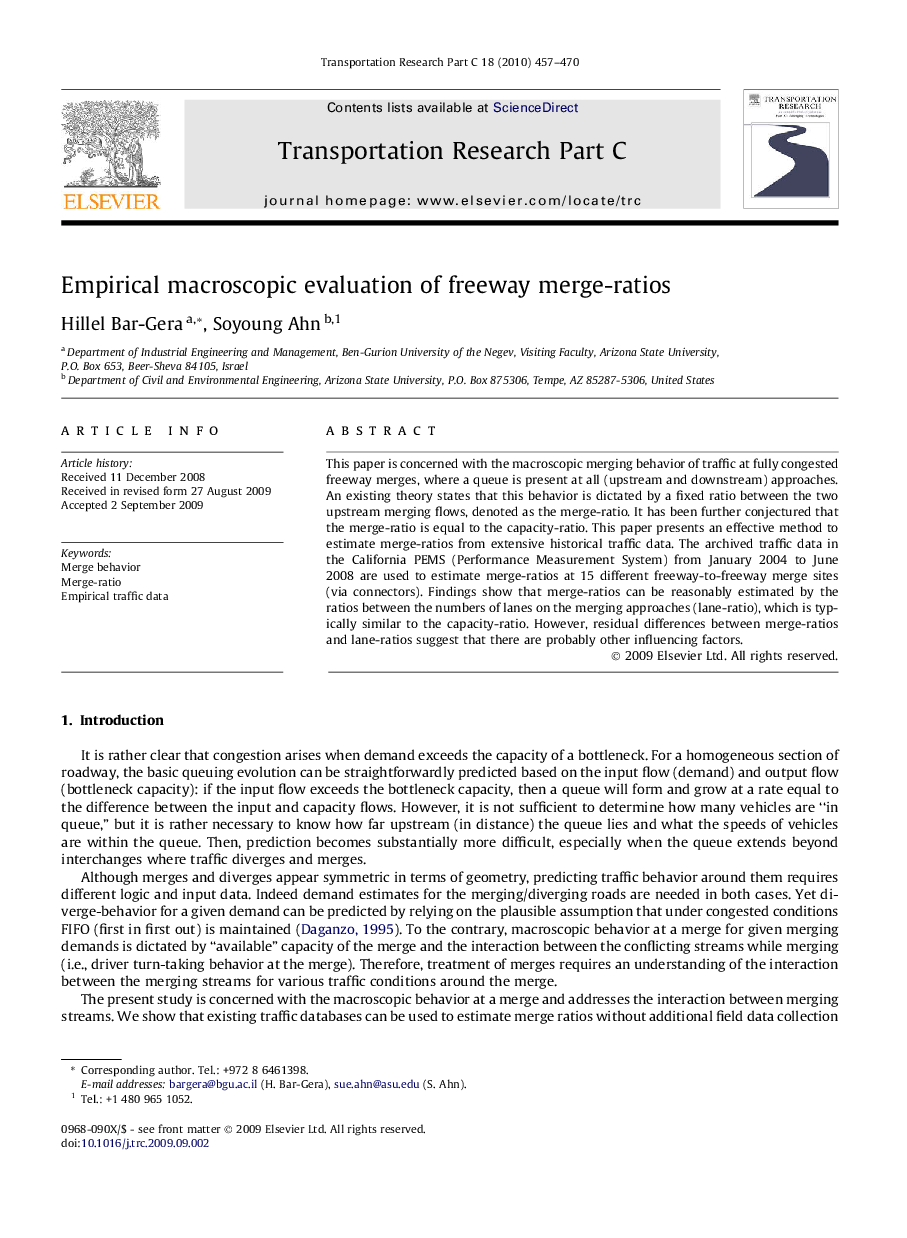| Article ID | Journal | Published Year | Pages | File Type |
|---|---|---|---|---|
| 525361 | Transportation Research Part C: Emerging Technologies | 2010 | 14 Pages |
This paper is concerned with the macroscopic merging behavior of traffic at fully congested freeway merges, where a queue is present at all (upstream and downstream) approaches. An existing theory states that this behavior is dictated by a fixed ratio between the two upstream merging flows, denoted as the merge-ratio. It has been further conjectured that the merge-ratio is equal to the capacity-ratio. This paper presents an effective method to estimate merge-ratios from extensive historical traffic data. The archived traffic data in the California PEMS (Performance Measurement System) from January 2004 to June 2008 are used to estimate merge-ratios at 15 different freeway-to-freeway merge sites (via connectors). Findings show that merge-ratios can be reasonably estimated by the ratios between the numbers of lanes on the merging approaches (lane-ratio), which is typically similar to the capacity-ratio. However, residual differences between merge-ratios and lane-ratios suggest that there are probably other influencing factors.
